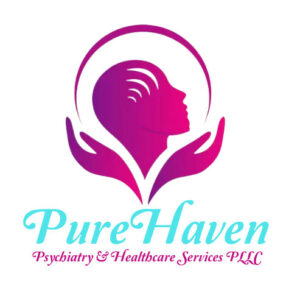ADHD and Autism: Overlapping Traits and Key Differences
When it comes to neurodevelopmental conditions, ADHD and autism are often mentioned in the same conversation—and for good reason. Both can affect focus, social interaction, and sensory processing. But while there are clear overlaps, these are two distinct diagnoses with unique characteristics and challenges. This blog will explore the overlapping traits and key differences between ADHD and autism, helping you understand how each condition presents and what it means to live with one or both. If you’ve ever wondered about the ADHD autism difference, or asked, “Can you have ADHD and autism at the same time?” — this guide will help you untangle the similarities and understand the distinctions.
Table of Contents
- What Are ADHD and Autism?
- Can You Have ADHD and Autism?
- Overlapping Symptoms
- Key Differences Between ADHD and Autism
- ADHD and ASD in Adults
- Why a Proper Diagnosis Matters
- When to Seek Professional Help
- Call to Action
- Final Thoughts
1. What Are ADHD and Autism?
ADHD (Attention-Deficit/Hyperactivity Disorder) affects attention regulation, impulse control, and activity levels. It’s characterized by inattention, hyperactivity, or both.
Autism Spectrum Disorder (ASD) is a developmental condition that primarily affects social communication and behavior. Individuals with autism may show restricted interests, repetitive behaviors, and sensory sensitivities.
Both are considered neurodivergent traits, meaning they reflect natural variations in brain development.
2. Can You Have ADHD and Autism?
Yes, it’s possible—and even common—to have both ADHD and autism. In fact, research suggests that up to 50–70% of individuals with autism also meet the criteria for ADHD. However, because symptoms overlap, it can be difficult to distinguish one from the other without a comprehensive evaluation.
Having both conditions is sometimes referred to as a dual diagnosis, and it often requires tailored treatment plans that address the challenges of each.
3. Overlapping Symptoms
There are many reasons why people confuse ADHD and autism, especially in children and adults who don’t present with typical symptoms. Shared traits include:
-
Trouble focusing or sustaining attention
-
Sensory sensitivities (e.g., aversion to certain sounds or textures)
-
Difficulty with transitions or changes in routine
-
Social awkwardness or challenges interpreting social cues
-
Impulsivity or emotional dysregulation
These overlaps can lead someone to question whether they have ADHD or autism, or both.
4. Key Differences Between ADHD and Autism
While ADHD and autism share overlapping traits like distractibility, sensory sensitivities, and social difficulties, they arise from different neurological patterns and lead to distinct challenges. ADHD is primarily characterized by inattention, impulsivity, and hyperactivity, whereas autism often centers around difficulties with social communication and repetitive behaviors. In social situations, individuals with ADHD may act impulsively or interrupt others, while those with autism may avoid eye contact or struggle to interpret social cues. Interests also vary—people with ADHD tend to shift focus quickly, whereas those with autism might intensely fixate on specific topics or routines. Flexibility is another key difference: ADHD often brings distractibility but adaptability, while autism typically involves a strong preference for structure and resistance to change. Sensory sensitivities may affect both, but they tend to be more central and intense in autism. Understanding the ADHD autism difference is crucial for identifying the right support systems and treatment paths for each individual.
5. ADHD and ASD in Adults
ADHD and ASD in adults can present differently than in childhood. For example:
-
Adults with ADHD may struggle with chronic disorganization, time management issues, or difficulty staying employed.
-
Adults with autism may experience burnout from masking (hiding autistic traits), social fatigue, or rigid routines.
Because both conditions are underdiagnosed in adults—especially in women—many live for years without understanding why they struggle. If you suspect you have ADHD and autism, a qualified clinician can conduct neuropsychological testing or behavioral assessments to provide clarity.
6. Why a Proper Diagnosis Matters
Whether you’re exploring signs of autism vs ADHD or wondering if you have both, a proper diagnosis is essential. Misdiagnosis can lead to ineffective treatments or support strategies that don’t fit your needs. For instance:
-
Someone with undiagnosed autism may benefit more from social skills training than ADHD medication.
-
An adult with ADHD might struggle in therapy designed solely for autism.
Understanding your neurodivergence allows you to access the right accommodations, treatment, and community support.
7. When to Seek Professional Help
You should consider seeking a professional evaluation if:
-
You’ve long struggled with focus, social communication, or sensory issues
-
Your symptoms interfere with work, school, or relationships
-
You’re unsure whether you have ADHD or autism
-
You suspect you might have both and need a clearer picture of your mental health
A mental health professional or neuropsychologist can conduct in-depth testing to help you understand if you meet the criteria for ADHD and autism, and recommend next steps.
8. Call to Action
If you or a loved one are navigating the challenges of ADHD and autism, don’t wait to get the support you deserve. Early and accurate diagnosis can make all the difference in managing symptoms and improving quality of life. At Pure Haven Psychiatry, our compassionate team specializes in neurodevelopmental assessments and personalized treatment plans designed to meet your unique needs. Reach out today to schedule a consultation and take the first step toward clarity and care.
9. Final Thoughts
The relationship between ADHD and autism is complex but increasingly understood. While they can look similar on the surface, key differences in motivation, communication, and behavior help distinguish the two. And yes, you can have ADHD and autism—which makes individualized care even more important. If you’re feeling overwhelmed, seeking a proper diagnosis is a powerful first step. Understanding your unique neurodivergent traits can lead to better self-awareness, effective treatment, and a more fulfilling life.
Disclaimer
This blog is for informational purposes only and should not replace professional medical advice, diagnosis, or treatment. If you suspect you or a loved one may have ADHD, autism, or both, consult a licensed healthcare provider or mental health professional for a comprehensive evaluation.

